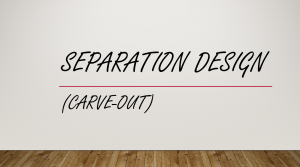If you are a frequent seller you might already know it, if you are quite new to acquisitions you should avoid the mistakes many sellers have done many times already. From a closed deal to a finalized divestment can be a long and sometimes quite costly way. If you just sell an independent company, it should not be that complicated. But especially if you “carve-out” a business of your company (or worse of a set of legal entities), this needs more considerations, planning and especially sometimes also consideration in the transaction contract for this deal.
We help you to balance the needed speed with the need to stay calm and relaxed to secure you achieve the business targets for your deal. Some of the factors that create this dilemma:
- Need for Speed – some examples
- When you plan to sell a business you never can start your separation design too early to understand what you can list as assets in the deal and what you might need to focus on to mitigate the risk of negative impacts on the transaction price
- The better prepared you are for the separation the easier and quicker it can be done, especially the phase from signing of the transaction to closing it and the eventual need of TSAs (transactional services agreement) can be reduced
- TSA Management needs to be prepared to meet the obligations that will come with the deal contract
- Stay relaxed and calm is good – examples
- Before you have negotiated you might have valuated your business wrongly and this might lead to a change of direction: you might not sell at all, scope it differently, await better bids, etc.
- Usually high confidentiality is key to a successful transaction, if you start to implement a lot of changes your employees, but even other stakeholders might get suspicious.
- The most efficient operation is of course a common plan by seller and buyer that addresses separation and integration at the same time, in only one major change
By using us to lead your separation design you can be assured that
- separation design is done efficient and not taking more time of your management and employees as necessary
- the dilemma of speed and relaxedness is judged by objective eyes instead of needs to be resolved by your own subjective, involved and highly affected management
- best practices and experiences from other companies and deals are re-used
